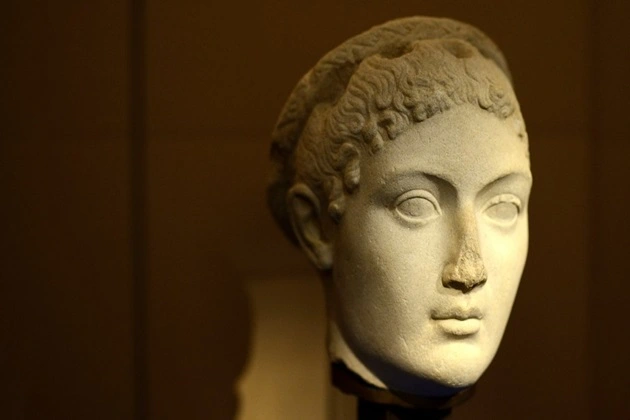Cleopatra Selene II was the daughter of Roman general Mark Antony and Cleopatra VII, perhaps the most well-known queen in Egyptian history.
She made a huge impact on history during her stormy and wealthy life. In her essence, she strongly entwined the history of ancient Egypt and magnificent Rome.
Power struggles and political intrigue were prevalent at the time of Cleopatra Selene II’s birth. The enigmatic Egyptian princess triumphed over all obstacles and rose to become a magnificent queen.
What was the unique daughter of the great Cleopatra, and why is so little known about her?
A person of royal lineage
The year 40 B.C. saw great unrest and instability in Alexandria, Egypt, where Cleopatra Selene II and her twin brother Alexander Helios were born.
As the offspring of the renowned Cleopatra VII and the Roman hero Mark Antony, they were destined to become members of one of the most well-known and contentious families in history.
From the start, it appeared as though their birthright alone would bring them greatness and honor. Things were far more complicated in real life.
Selene II, Cleopatra’s name, is derived from the Greek term meaning “moon,” but her brother’s name means “sun.” Clearly knowing what she was doing, Queen Cleopatra gave her children the names of the major figures in history.
The proud Egyptian empress and her partner were not spared by fortune alone. Octavian, the Emperor, vanquished them directly. The twins were taken prisoner and transferred to Rome.
The children were raised at the house of the emperor’s sister and the former spouse of their father Mark Antony, even though they were essentially prisoners.
Cleopatra Selene wasted no time at all in Rome. She devoured information and seized the chance to attend a renowned Roman school. The girl was an accomplished orator and rhetorician who studied Greek and Latin literature and philosophy with passion. The princess was multilingual.
A princess becomes a queen
As Cleopatra Selene II grew up, she was offered to King Juba II of Mauritania (present-day Morocco and Algeria) as a bride. Rome formed this union as part of a geopolitical pact to increase its influence in North Africa.
The daughter of the deposed Egyptian queen gained authority and influence as well from the marriage. Ptolemy and Drusilla were the children of Cleopatra Selene II and Juba II.
The nation flourished, and the royal court gained notoriety for its unwavering support of intellectual endeavors, scientific advancements, and cultural advancements.
The Queen of Mauritania rose to prominence in a world where the might of the ancient Roman Empire ruled supreme.
Cleopatra Selene II demonstrated her strength as a leader and her diplomatic abilities. She was renowned for encouraging the advancement of science, the arts, and architecture, as well as cultural interaction.
As she skillfully negotiated Rome’s complex political environment while preserving her state’s autonomy, Cleopatra Selene II’s reign was characterized by stability and prosperity. She made solid pacts with Roman emperors, guaranteeing Mauretania’s safety and Rome’s allegiance.
Cleopatra Selene II was regarded among her peers for her leadership, intelligence, and diplomatic skills. According to most scholars, Mauritania flourished in many ways under her rule.
Great legacy
Policies that were successful in fostering infrastructural development, cultural interchange, and economic expansion produced results.
Philosophers, intellectuals, and artists from all across the Roman Empire gathered at the royal court at Caesarea, now Cherchel in Algeria. Caesarea developed into a center of intellectualism.
Through her support of the arts and sciences, Cleopatra Selene II facilitated the growth of Moorish culture and made a lasting impact on the intellectual and creative climate of her day.
The architectural makeover of Cleopatra Selene II’s capital is among her greatest achievements. She actively contributed to the construction of opulent temples, exquisite theaters, and other structures that captured the magnificence and majesty of Roman and Egyptian architectural designs.
The Mauritania queen’s authority extended far beyond the boundaries of her nation. By keeping ties with Egypt, she upheld the legacy of her great forefathers.
Selene II, one of Cleopatra’s offspring, significantly influenced the history of the Roman Empire. Her son, Ptolemy, excelled in the military and rose to the rank of admiral.
Unfortunately, little is known about the daughter other than that she married a member of the highest class of Roman nobility.
Regretfully, following the demise of Cleopatra Selene II, the empire progressively deteriorated and was eventually conquered by Rome in 40 A.D., when the notorious Emperor Caligula assassinated King Ptolemy of Mauritania.
The final great queen of Mauritania left an enduring mark on the continent’s identity that has endured for generations.
